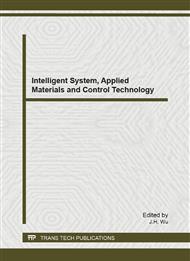p.316
p.320
p.324
p.329
p.334
p.338
p.342
p.346
p.353
FBG Strain Sensor for Monitoring Daily Wind Direction Change on Power Tower Cross Arm Deformation Effects
Abstract:
Under the influence of ice coating and other natural factors, Power tower cross arm will deform, damage and even fracture with the increasing stress. On the power tower of Yanjin converting station, four fiber Bragg grating strain sensors were installed. By changing the internal force that main material of the cross arm suffered, deflection change of each main material occurred, resulting in fiber Bragg grating wavelength of the fiber Bragg grating strain sensors which on the surface of the cross arm shifting. During the 479 days monitoring, the # 2 sensor daily mean strain range is the largest with the value of 1700.98, while the 3 # sensors have the smallest value of 1122.91. On the July 20th 2011, daily mean strain of the 2# strain sensor located in the insulation cross arm reached the maximum value 382.01, while on the February 19th 2011, that of the 4# sensor achieved the minimum value -1477.75.On the February 19th 2011, both local wind direction and speed had the biggest changes through the testing process, which indicates that the cable sweeping wind is the mainly reason to cause the power tower cross arm deformation.
Info:
Periodical:
Pages:
334-337
Citation:
Online since:
January 2013
Authors:
Price:
Сopyright:
© 2013 Trans Tech Publications Ltd. All Rights Reserved
Share:
Citation:


